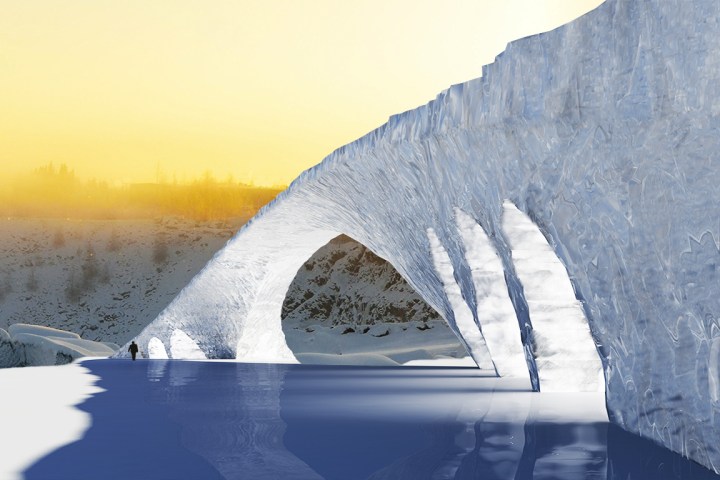
Finland’s version of the Da Vinci bridge will be 64-meter long and 5-meters wide with a free span of almost 35-meters. It will use approximately 900 tons of ice in its construction, which will start next week and continue around the clock to keep the machinery from freezing up in the cold temperatures. Workers hope to have the bridge completed by February 13th to coincide with the Juuka ice festival.
The bridge will be constructed from a type of pykrete comprised of water and two percent paper fiber. When frozen, the ice-paper mixture will be three times as strong as regular ice and ten times as tough. Because of its unique design, engineers will use a balloon as a mold to help shape and support the bridge during construction. Once the bridge is complete, the balloon will be removed, and the bridge will be freestanding. The bridge will remain in place until the spring thaw causes it to melt. When it disappears, the leftover paper fiber will be used for composting.
Over 150 students and staff from ten different universities throughout Europe will participate in the project. To test their design, the team will drive a two-ton car over the bridge. When the car testing is complete, the bridge will be open to pedestrians who will be able to walk on the structure. It is expected to attract thousands of visitors during the annual ice festival event.



